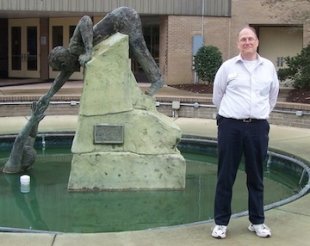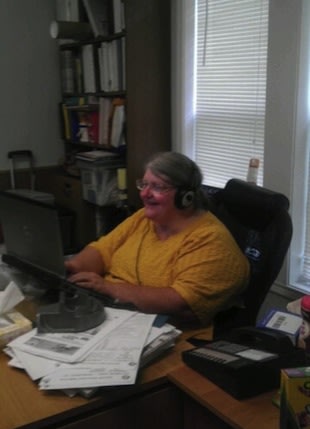Forget the cancellation of White House tours.
We asked Yahoo News readers to tell us how the deep automatic federal spending cuts known as the sequester are affecting their lives right now. And readers responded.
"We are cutting our spending and living more frugally because it looks like an $800 per month pay cut will be heading our way," wrote James Ferguson of Aberdeen, Md., whose wife works for the Department of Defense and faces furlough.
The sequester went into effect on March 1 after Congress and President Barack Obama failed to reach a major deficit-reduction deal. Some $85 billion in cuts were triggered, to be spread evenly across domestic and defense spending.
Obama has warned that the sequester could imperil the nation's slow economic recovery. Some conservative lawmakers have welcomed the cuts, saying it's a needed down payment on the type of cuts necessary to reducing the federal deficit.
A few respondents who emailed us or submitted entries through the Yahoo! Contributor Network said the impact of the cuts are far overblown. But the majority of those who reached out to Yahoo News were worried about furloughs for themselves or their spouses.
Readers also shared other concerns. Cassandra Friederichs told us that she and her husband, both veterans, are preparing for tuition assistance cuts; several readers looking for work explained how they are bracing for cuts in unemployment assistance; federal sales executive Carol Smouse said her office phones have stopped ringing as clients avoid their business; and one active-duty National Guardsman expressed outrage over facing a furlough because he also works as a civilian. Several respondents voiced concern about families with a disabled relative who may find their assistance cut.
Here are excerpts from some of the many submissions we received. Please note that some respondents requested their names be redacted due to concerns about their employment or military status:
Husband prepares to find part-time work for furlough day
Since 2006, my husband, Mac, has worked for the Department of Defense ...
 Wendy Lunko and her husband, MacWith the sequester, however, he has already been told that everyone in his division will participate in furloughs. Of course, since everything in the government is related to politics, the furloughs will be one day each week, through the rest of the fiscal year, rather than allowing employees to opt for a 22-consecutive-day furlough, which would allow them to receive short-term unemployment. ...
Wendy Lunko and her husband, MacWith the sequester, however, he has already been told that everyone in his division will participate in furloughs. Of course, since everything in the government is related to politics, the furloughs will be one day each week, through the rest of the fiscal year, rather than allowing employees to opt for a 22-consecutive-day furlough, which would allow them to receive short-term unemployment. ...
I am very thankful I work full-time, as it means that while we still need to tweak our budget a bit, we will still have additional income. Mac is also exploring options for a part-time job, but until he is told exactly what day will be his furlough day, he cannot do too much. While I admire his work ethic and his willingness to take on a second job, I know that it will mean I'll get to spend less time with him. ...
I generally think we need less government spending, yet the sequester makes no real sense to me. I think the cuts are rather politically motivated, and are overly dramatic to attract attention, like ending the White House tours.
?Wendy Lunko, Pennsylvania
Diabetic woman faces April reduction in unemployment benefits
Last week, I received a notification from the unemployment office that due to the sequestration cuts, "the federal government has directed us to reduce your EUC payments by 10.7% beginning that first week in April. We (state) have no control over these cuts in benefits and no ability to waive or reduce the level of cuts."
The 10.7% reduction may not seem like a lot to you, but [it] is to me. After my employer of 12 years closed their doors, I have been actively looking every day for the last 8 months for a job to no avail. After rent & utilities, I can barely manage to put food on my table. Not a good diet when you are a diabetic. I have cut down on my expenses. I've already sold my car, cut off my home phone, switched to basic cable TV/Internet, switched to a prepaid cellphone plan. I can no longer afford to pay for (COBRA) health insurance. Without health insurance, I can no longer afford to buy the diabetic testing supplies or medications recommended for controling this pre-existing condition.
?Connie Miller, New York
Sequester is not a big deal
Way overblown. Their budget is less but they still have same or more money to spend versus last year just the budget was reduced for this year. Any qualified business manager could handle this. ... They need to reduce spending. Politics.
?Bob
Camp Lejeune, N.C., local worries about community
I believe the sequester will affect my personal income. I work at Johnston Community College in Smithfield, N.C. We had a budget meeting soon after the sequestration took effect, and I asked our comptroller if the college would be affected by those budget cuts.
 Stephen Link at Johnston Community CollegeThe answer: "Not likely in this budget year." Of course, "certainly not" would have been more preferable.
Stephen Link at Johnston Community CollegeThe answer: "Not likely in this budget year." Of course, "certainly not" would have been more preferable.
Since we are in close proximity to Camp Lejeune (in Jacksonville) and even closer to Seymour Johnson [Air Force Base] (in Goldsboro), we will be seeing effects of spending cutbacks through areas other than a paycheck.
Am I really worried for myself? No. Am I worried about the overall effect that this can have on our local economy? Certainly. My belief is that these troubles will touch all employees of local, state, and federal governments. The net result will extend the recession, cause higher crime, and possibly launch us back into an economic depression like this generation has never seen.
?Stephen Link, North Carolina
Border Patrol agent faces furlough and end of overtime
I am a Border Patrol Agent and very soon my fellow Agents and I will be facing massive cuts. Beginning April 7th, we will no longer be able to work overtime as well as facing one furlough day each pay period (every two weeks). The overtime is a necessity in order for Agents to maintain border security during shift changes as well as other things that may happen during a shift which may include tracking groups and filling out paperwork. We also work in very extreme conditions. During the summer, temperatures can reach up to 125 degrees while we work shifts up to ten hours. We also track groups through the mountains and desert never knowing what can be waiting for us. When April 7th comes, we will be losing approximately 40% of our annual income. Agents who came from all over the country to work in the southwest will now be unable to pay for their homes, student loans, etc. It seems like this is a joke to our government while they try to play the blame game. There are a lot of hard working agents out there who have sacrificed a lot in order to help secure our borders.
?Border Patrol agent, El Centro, Calif.
No White House tour and a cut to unemployment benefits
Congress' decision to let $85 billion in across-the-board, indiscriminate spending cuts directly impact my family's well-being in Chicago.
My daughter, an eighth-grader, was supposed to take the class trip to Washington, D.C., this summer. Because of the sequester, she and her classmates won't see the White House. The financial cuts prompted the White House to cancel tours.
My husband, who has been unemployed or non-scheduled from his job at the Illinois Department of Employment Security for the past six months, will be hit with a 10-percent cut to his benefits. That's almost $200 less from his already very slim unemployment check. If he does not get his IDES job back soon, our family would be cut off from the medical and dental insurance benefits and we'll be forced to sign up for a more expensive plan under COBRA.
President Barack Obama's decisions?instead of improving the lives of middle-class families?hurt their well-being at their core. I am not sure that a Republican president would have done a better job getting our nation to balance its finances; unfortunately, at present, we do not have an alternative.
?Irene Lankin-Duffy, Chicago, Ill.
Department of Defense employee faces furlough after 30 years of service
I will be furloughed one day a week for 22 weeks. I have been a federal employee for over 30 years. It saddens me that Washington could not resolve and compromise to avoid sequester cuts. I don?t wear a suit to work or work in D.C. Many of my civilian counterparts provide many hours of work away from home to support National Defense.
Several of my co-workers responded when asked to go to Japan and help after the tsunami and Fukushima nuclear disaster. How are our dedication and many years of loyal service repaid? ...
[Update: This reader shared a DOD email update with Yahoo News informing employees that furlough notices have been delayed for ?approximately 2 weeks? to allow the department to analyze the impact of ?continuing resolution legislation on the Department?s resources.?]
?Federal employee, Hampton Roads, Va.
Active-duty National Guardsman faces furlough in civilian-military gray area
This is my twelfth scheduled workday in a row, so this weekend is a little more eagerly awaited than most. What had not been eagerly awaited was my furlough letter, advising me that in 30 days, I will be subject to 22 mandatory days off for the remainder of this fiscal year?effectively a 20% cut in pay. ... I haven?t told you who my employer is yet, have I? It?s the U.S. Air Force. ...
Long story short, I have military skill training qualifications and uniform, but a DoD civilian paycheck. Then, one weekend a month and two weeks a year, I show up at the same base, in my same uniform, in my same work area and get paid by the Air Force according to my military rank for my reserve duties. ...
I?m not exceptionally concerned whose fault the sequester is. I?m concerned that because I live in the gray area of military and civilian status, that I can still be sent to war, but I can?t get a full week?s paycheck because of the sequester.
?Technical sergeant, U.S. Air Force, Nevada National Guard motor vehicle operator, Reno, Nev.
Sequester doesn't go far enough
It's become a comically regular occurrence for members of both the legislative and executive branches of the U.S. government to make dire predictions of catastrophic shutdowns every time significant cuts to the federal budget are mentioned.
The most recent of these cuts (and one of the few to actually get through the legislative process) is the by now well-known sequestration measure. ...
For those who say these cuts are unsustainable, I respond by pointing out that neither is having a debt-to-GDP ratio of more than 100 percent. For those who say it's a step in the right direction, I say it's not even that. The deficit in 2023 will still be greater than it is now, even if the sequester cuts manage to stay in place. Sure, these cuts are better than none, but they're really just a fraction of a drop in the bucket.
?Ryan Hurley, Cincinnati, Ohio
 Mylinda Elliott
Mylinda Elliott
Louisiana woman worries about the disabled and her paycheck
I live in Lake Charles, La., where I work for a nonprofit that helps families that have a member with a disability. Although I have not been directly affected by the sequestration yet, we are all holding our breath. Many of the programs that help our families are supported by funds we are being told will be cut.
If we lose funding, it will be funding for wages?more specifically my wages. ...
In the past year, I have worked with several families with a member with a disability to get Social Security. The cuts to the Social Security Administration may not cut their check, but will curtail the hours an office will be open, and close some offices. This will make it harder on families. It will take longer for me to be able to assist them. I will be able to reach fewer families.
?Mylinda Elliott, Lake Charles, La.
Maryland man?s wife faces furloughs totaling $800/month
We are cutting our spending and living more frugally because it looks like an $800 per month pay cut will be heading our way. The government is forcing my wife to take one day off per week, totaling four days per month, which comes to approximately $800 a month of lost income for our family. I am a full-time real estate agent; that is 100 percent commissioned salary. My wife's income was our steady, reliable income until the sequester. I am currently searching for part-time employment on top of my full-time position to supplement the income cut. ...
I also have often thought of the local businesses and restaurants that thrive off of the 30,000-plus APG employees who eat lunch every day in these establishments, and who shop and buy groceries and gas all around the proving ground. All of these businesses will be affected as well. Across the board, within the DoD, everybody will be taking off at least one day a week. This will ripple across the local economy.
What can be done to help or fix this situation? How about we start these budget cuts from the top down?
?James Ferguson, Aberdeen, Md.
Federal sales executive says phones have stopped ringing
Working in sales, your job is on the line every time you fail to meet quota, 3 months in a row of failing to achieve it means you will be put "on notice" and will be required to bring in enough sales to meet quotas, or be terminated. Now that the sequester is going into effect, our Federal customers do not want to meet with us. The dozens of emails we would get every day have stopped coming, our phones are not ringing, and we are not selling. ...
Because of my job uncertainty, I kept my current car and had the transmission replaced, rather than buy a new car. I would have rather bought a new car, mine is now 10 years old, but I was too afraid to take on a car payment when I could end up out of work at any time. My coworkers are all making similar decisions. We are nervous and unwilling to take on financial obligations when our future is so uncertain.
I know we all wonder what we will do.
?Carol Smouse
Military couple prepares for tuition assistance cuts
I am relying on the Tuition Assistance that used to be offered to the military to finish school a little earlier than planned so that I can find a job and help my daughter grow up in a middle-class home. My fiance and I are both denied the right to have that Tuition Assistance that we were both PROMISED upon signing our contracts to serve our countries. ...
I am not angry that they are making cuts because that is what needs to be done, but I am angry at where they are deciding to make those cuts. Why does Obama get paid what he does? Why do the Congressmen, that keep delaying things and making these budgets go past [their deadlines], get paid [as much as] they do? If my fiance were to do the things that Congress does, he would be FIRED!
?Cassandra Friederichs
Source: http://news.yahoo.com/blogs/ticket/stories-sequester-yahoo-news-readers-respond-151156262--politics.html
bridge to nowhere primary results dale earnhardt jr michigan primary daytona 500 winner cleveland plain dealer john scott











